Solanum okadae
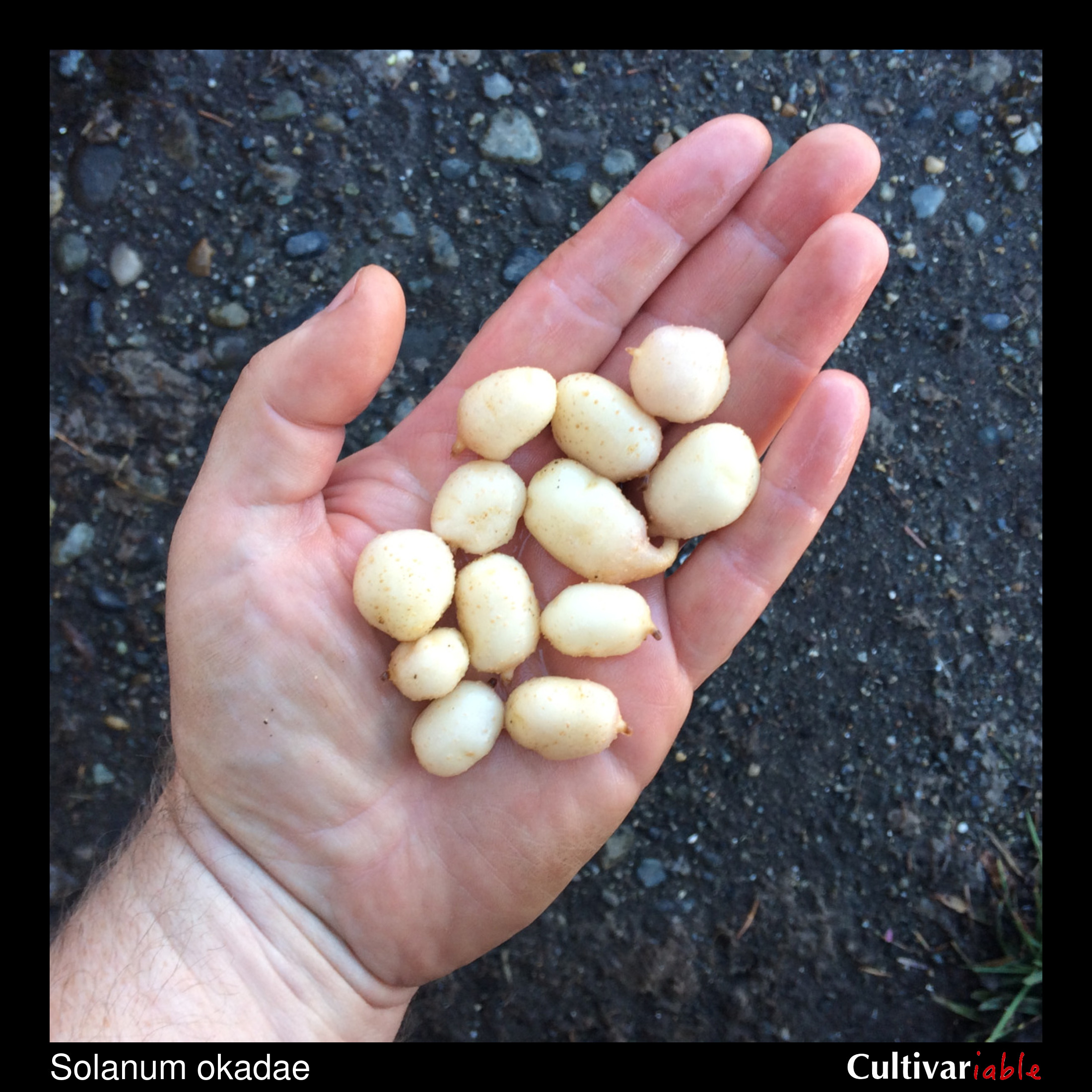
| Common Names | Monte ch’ogue |
| Code | oka |
| Synonyms | S. venatoris |
| Clade | 4 |
| Series | Tuberosa |
| Ploidy | Diploid (2x) |
| EBN | 2 |
| Tuberization Photoperiod | Unknown |
| Self-compatibility | No |
| Nuclear Genome | A |
| Cytoplasmic Genome | Unknown |
| Citation | Hawkes & Hjerting: Bot. J. Linn. Soc. 86: 414. 1983. |
Description
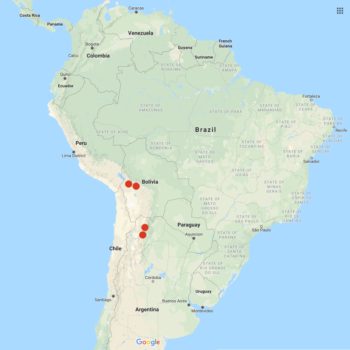
Solanum okadae is primarily a western Bolivian species, ranging south into Argentina, growing in moist mid-elevation habitats. Plants about a foot tall. Stolons two feet long or more. Tubers round to ovoid, reaching about an inch in diameter. Flowers white. Berries round and a little more than 1/2 inch in diameter.
The specific epithet, okadae, honors Japanese botanist Kumio Okada, who described the species. While there is no completely standardized pronunciation for scientific names, the most common way to pronounce this species is probably so-LAY-num oh-KAD-ee.
Subramanian (2017) found that at least some accessions of this species have unusually high dry matter content.
EBN of this species has not yet been determined.
Resistances
Ochoa (1990) notes that this species is unusually vulnerable to late blight. On the other hand, a survey of markers in this species for the late blight resistance genes R2, R8, R9, and Rpi-blb2, revealed that some plants carry all of these genes (Muratova 2019). Some accessions of this species also carry the Rpi-oka1 gene that confers late blight resistance. This suggests that S. okadae should be a good source of late blight resistance.
Vega (1995) found that this species is less frost tolerant than domesticated potato.
| Condition | Type | Level of Resistance | Source |
|---|---|---|---|
| Drought | Abiotic | Resistant | Watanabe 2011 |
| Globodera pallida (Pale Cyst Nematode) | Invertebrate | Not resistant | Castelli 2003 |
| Globodera rostochiensis (Potato Cyst/Golden Nematode) | Invertebrate | Not resistant | Castelli 2003 |
| Myzus persicae (Green Peach Aphid) | Invertebrate | Not Resistant | Alvarez 2006 |
| Phytophthora infestans (Late Blight) | Fungus | Some resistance | Karki 2020 |
Glykoalkaloid content
Unknown.
Images
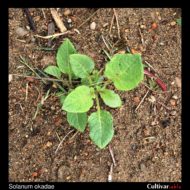 |
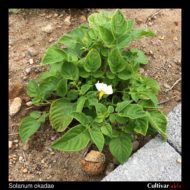 |
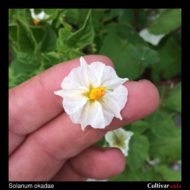 |
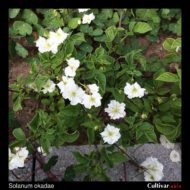 |
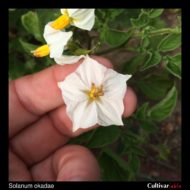 |
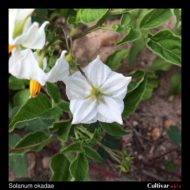 |
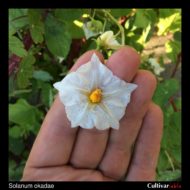 |
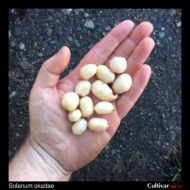 |
Cultivation
Camadro (2008) reports that seed production is difficult in this species even though it produces fertile pollen.
Breeding
Crosses with S. tuberosum
| Female | Male | Berry Set | Seed Set | Germination | Ploidy | Source |
| S. tuberosum | S. okadae | Low | Low | Jackson (1999) | ||
| S. okadae | S. tuberosum | None | None | Jackson (1999) | ||
| S. okadae | S. tuberosum | Yes | Low | Camadro (2008) |
Crosses with other species
Jackson (1999) found 4-10% 2n pollen for varieties of this species and Camadro (2008) found 0 to 5% 2n pollen and 0 to 3% 4n pollen.
| Female | Male | Berry Set | Seed Set | Germination | Ploidy | Source |
